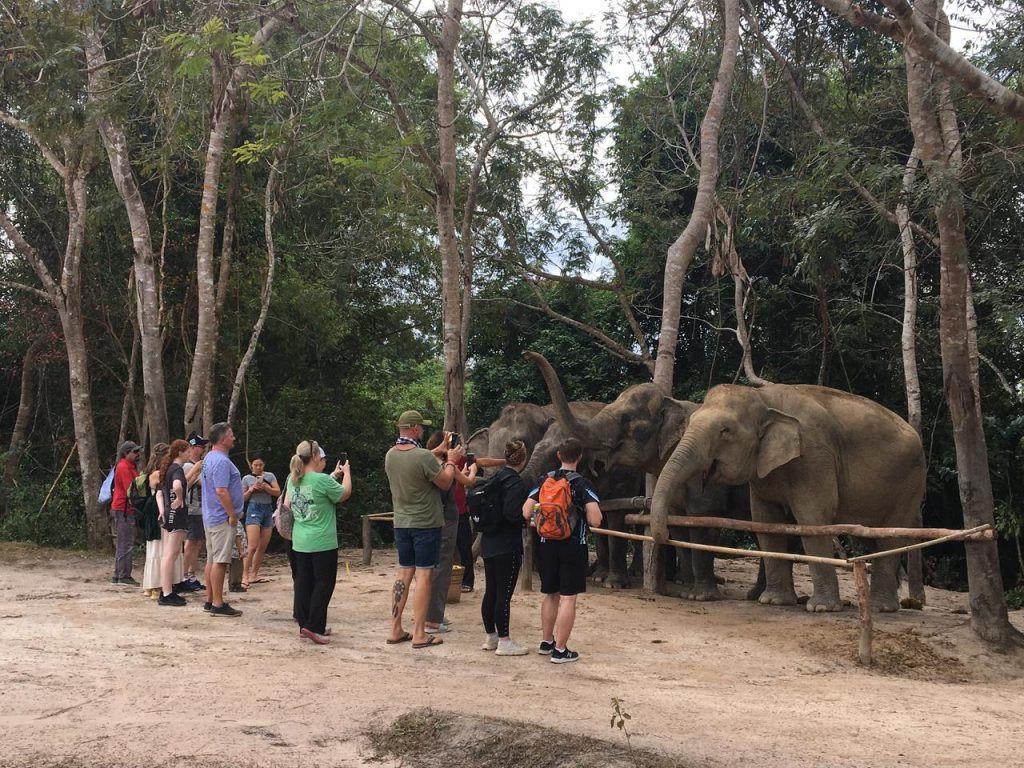
Save the Elephant Day
Created by the David Sheldrick Wildlife Trust, Save the Elephant Day is an annual event celebrated on 16th April every year. Its aim is to build awareness of the plight of elephants. As a result hopefully measures can be brought into law and practice to increase both the number of elephants and how they can be cared for. There is also a World Elephant Day but that is celebrated on August 12th every year.
The Actual Situation
There are 400,000 African elephants and 40,000 Asian elephants worldwide, though the latter may be an overestimate. According to the International Union for Conversation of Nature (IUCN), African elephants are on the vulnerable list, whereas Asian elephants are classified as endangered. Asian elephants are on the IUCN red list.
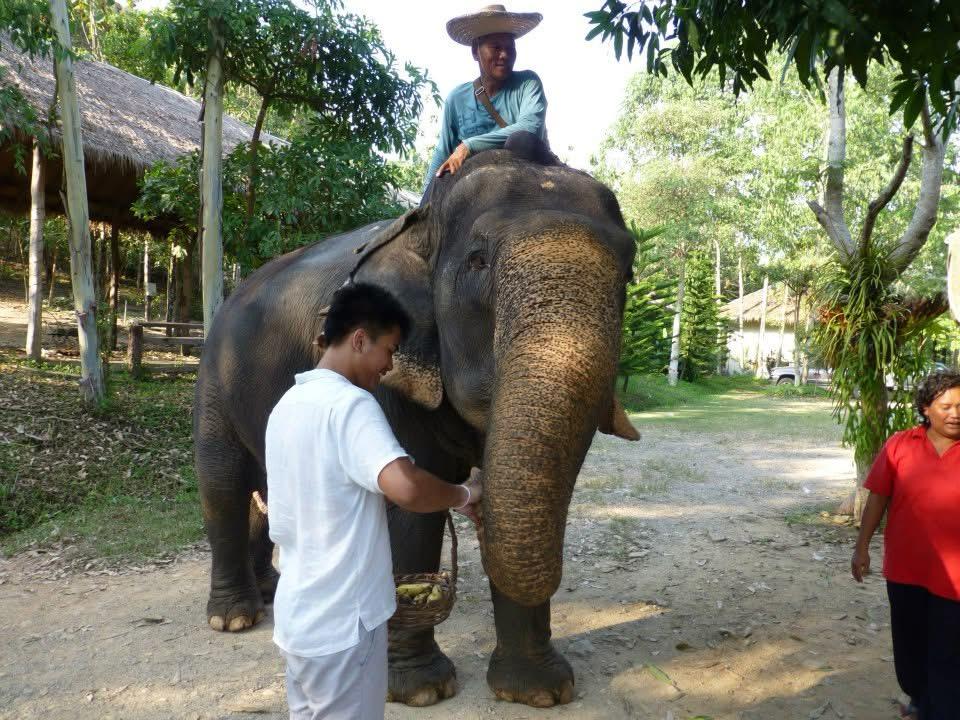
Ya with an elephant in Thailand
Poaching
With the price of ivory being more than gold, elephant poaching is big business. Some of the largest and most famous elephants have fallen to poachers. Such as Satao and Mountain Bull, both poached in Kenya. With limited sources, rangers responsible for the protection of the animals under their region, they face an uphill battle. Under equipped and under staffed they battle against an increasing savvy poacher with better resources and highly incentivized by the monetary award.
Loss of Habitat
Local farmers are not their best friends. Wild elephants can knock over fences, destroy crops and literally cause a rampage through a village. All causing a human-elephant conflict. Farmers are also increasing their land grab to provide for their needs, as are the industries of timber, construction and mining. All these factors reduce the habit for the elephant, and as a result make it easier for the poacher as the elephnats become more exposed.
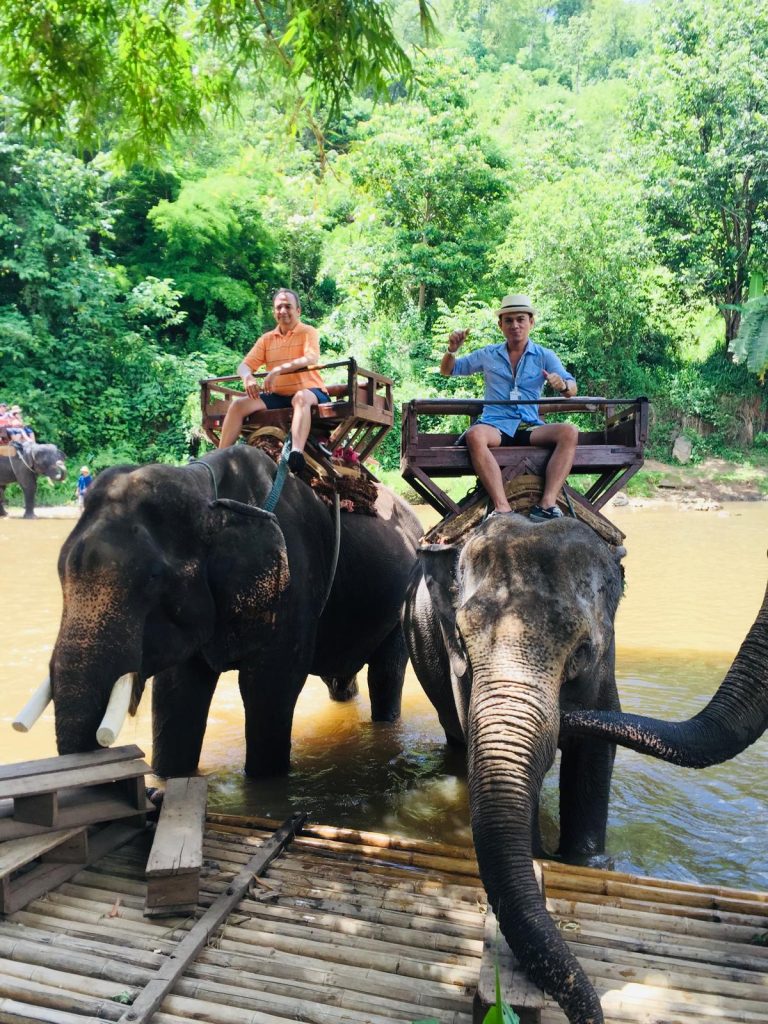
Phil riding an elephant
Save the Elephant Day Highlights Mistreatment in Captivity
What Save the Elephant Day can do and has had some success, it to draw attention to the treatment of elephants in captivity. Elephant trekking in Thailand is now forbidden, permitting their use for small walks only. But there is a brighter side. Indeed watching elephants taking a bathe in the local river, as for example at the Pinnawella Elephant Sanctuary in Sri Lanka, can be a real treat. Feeding baby elephants and feeding the adults vegetables can also be awe inspiring moments. Building awareness and funds in these elephant sanctuaries all help in the conversation of these magnificent animals. As does the creation of craft industries such as recycling dung into paper.
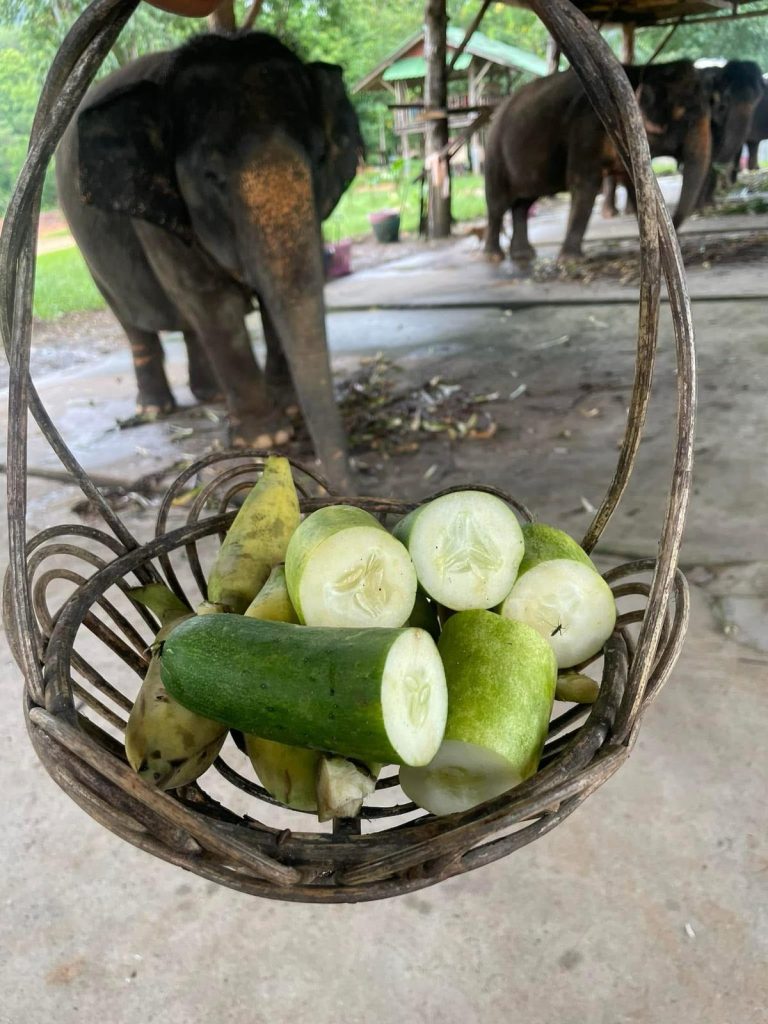
feeding an elephant local fruits & vegetables
Where the mission of a sanctuary is to introduce captive elephants back into the wild, this also has its challenges. Wild elephants can sense elephants that have been in contact with humans and they are rejected from the herd. This is why captive elephants need to be introduced into the wild as an autonomous group.
Whilst in Europe many live animals are no longer allowed in circuses, the same cannot be said for Asian celebrations. Many religious processions still include the elephant as one of the prime attractions.
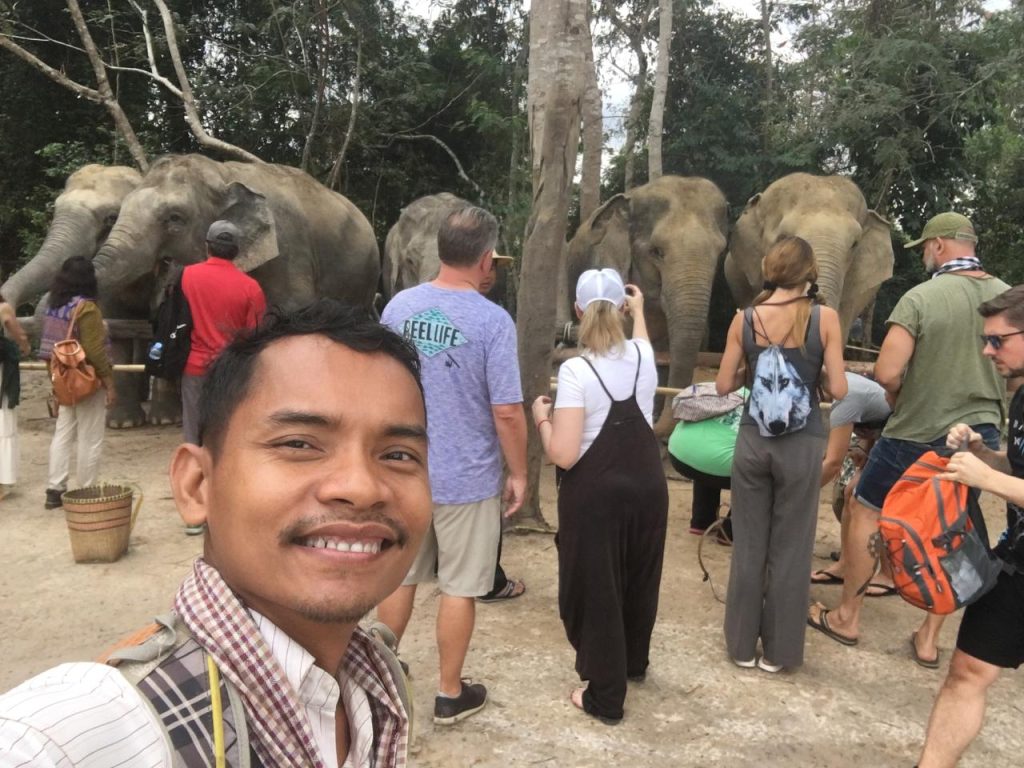
Responsible Tourism with Holiday Houseboys
Our Holiday Houseboys, gay friendly tour guides, in many of the elephant countries have knowledge of the local Elephant Sanctuaries. Happy to show you the plight and humane treatment of the elephant, go and discover for yourself accompanied with a Holiday Houseboy. Such destinations include Chiang Mai, Bangkok, Pattaya, Kandy, Kathmandu and Siem Reap to name a few.

